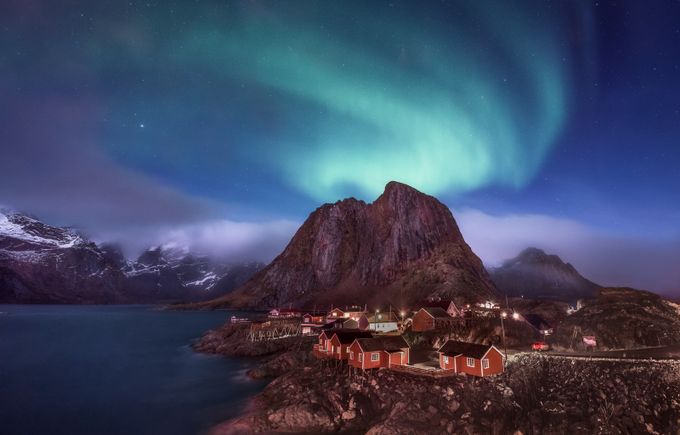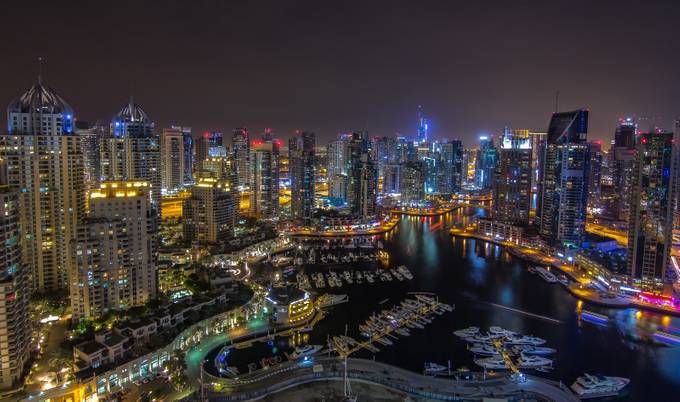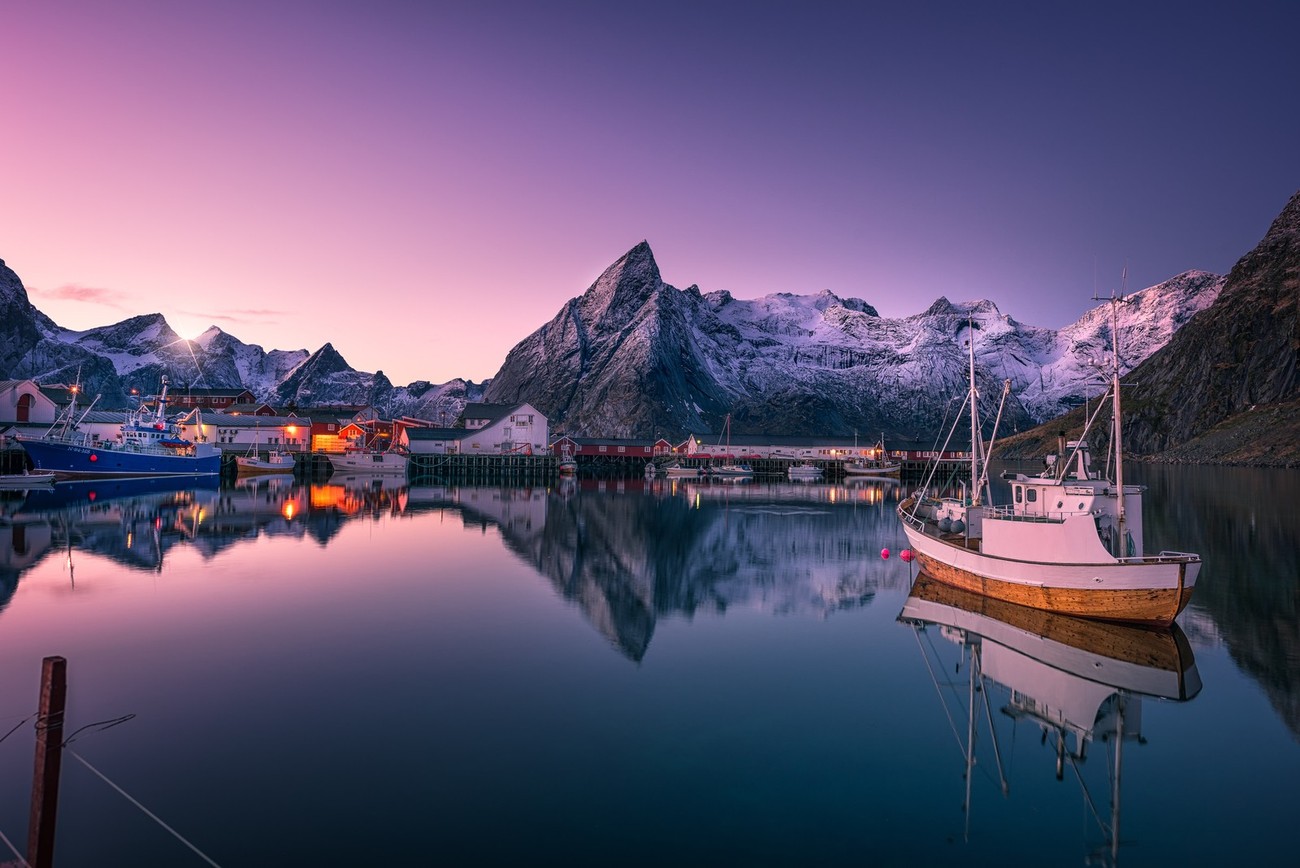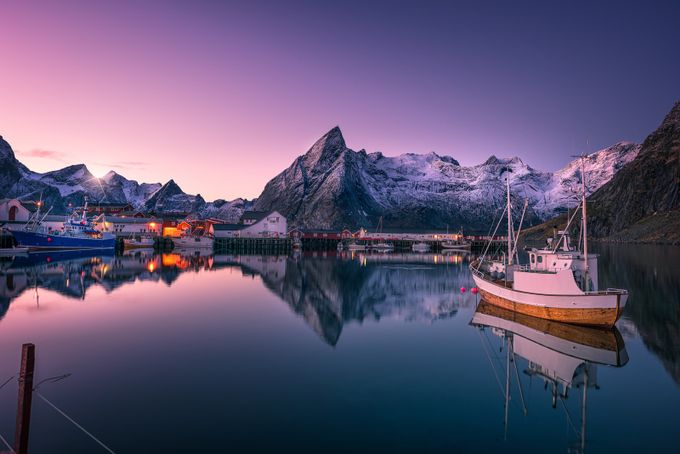Say hi to ViewBug community member damonmcdonald and enjoy our conversation. "I am a Chemistry and science teacher for an International School in Qatar. I have just started taking photographs in the last 2 years and only now am I learning the tricks of the trade. I love landscape work, but more specifically, I enjoy night time shooting, especially at blue hour work. I do not have the top quality equipment...yet, but with time, skills and some extra money, I can take my photography to the next level."
Tell us a bit about yourself, how do you describe your photography style?
I have been living overseas since 2002. Originally from Canada, my training is in medical sciences but I currently teach Chemistry in the International School system.
I have found that I have a completely random approach to my photography. I started with architectural cityscapes and landscapes but have been developing more of my skills with landscapes. I know that many photographers and artists follow a prescribed recipe to give them a signature look, but I simply do not possess enough processing skills to have that identifiable mark.
I always search for light first, content second. Hopefully the two will blend seamlessly together in a profound and memorable image! It comes down to some basic global adjustments and minimal work in Photoshop, as I am very much a Photoshop novice.
In one sentence what has photography done for you in your life?
Without question it has allowed me to appreciate the details; all the nuances associated with different people, places or things and with much greater clarity.
When did you start taking photos and what inspired you to get started?
I’ve only been taking photos for about three years or so. I’ve had the itch to capture light in images for many years, but like so many things, life tends to have other priorities in wait. It wasn’t until I had the freedom to purchase a smaller bridge camera that my interest soared. Any free evenings were consumed with travelling to new locations, snapping a few hours worth of images and heading home to look at the disastrous results. That is when my post-processing quest began. It has been an incredible eye opener to learn some of the secrets of the pros and amateurs alike, realizing that most images of today require a tremendous amount of work.

What has been your favorite shoot and why?
A trip to the Lofoten Islands last year during the Christmas holiday made for an unforgettable experience. I was alone and the trip itself was only organized one week prior. I had never been to Norway, let alone the arctic, and I had no idea just how spectacular the scenery really was. The sun does not rise above the horizon at this time of year which means only a couple of hours of twilight were available each morning around 9:00 a.m. I live in the desert of the Middle East, so to get back to the snow, ice and mountains was refreshing. There were very few people in the area and I felt completely isolated, but free to roam hundreds of kilometers around the archipelago and get into areas I could never have imagined.
The temperature never fell below zero, which is a huge advantage for the arctic! With so much darkness it was easy to look to the skies for the dancing auroras that decided to reveal themselves every night.
Most impressive of all is the sheer amount of incredible landscapes to shoot. I enjoyed researching the area and yet there was so more stunning scenery around every turn.
I enjoy the serenity and tranquility that comes with setting up every shot. The Lofoten Islands did not disappoint. A must for every photographer!

Do you remember a difficult photo shoot session? What happened?
I had planned a mountain trekking holiday in the Canadian Rockies in Mount Assiniboine Provincial Park. I was looking forward to climbing some relatively easy peaks and doing some time-lapse work. I flew into the park resort on helicopter and without stopping, sorted out my camping and photography gear and headed up to Wonder Peak. I was already hesitant as there have been grizzly bear sightings that week on the pass. I had my bear spray and sang very loudly for a few kilometers until I made the scree slopes heading up.
When I finally made it to the top, I quickly turned to take in the full view and at the same time I was removing my pack from my shoulders. I was not in the best of shape and was seriously exhausted so my feet weren’t responding to direction. I clipped a large rock while turning around, lost my balance with my pack and fell. I damaged my knee and ankle as well as my laptop and I cracked a lens. I was still able to get the footage I needed but it scared me. I was alone and if I had fallen backwards rather than forward, things would be very different for me right now. Rather than pitch a tent I decided to get back to my cabin. The next morning I was in a lot of pain and had trouble walking. That brought an end to my time-lapse saga but I managed in the end to capture footage from other low-lying areas in the park over the next three days.

What do you carry in your camera bag?
Body: Nikon D810
Lenses: Nikon AF-S FX NIKKOR 14-24mm f/2.8G ED and Nikon AF-S FX NIKKOR 24-70mm f/2.8G ED
Manfrotto 055xprob tripod
CamRanger wireless remote
Multiple batteries, memory cards
13 inch Macbook Pro
A new edition to the bag: Formatt Hitech ND and GND Firecrest filters with additional polarizing filter.

Do you have a favorite location and time of the day to shoot?
I love to shoot in low light conditions. Wherever that certain kind of light catches my eye, I will try to capture it, whether in cityscapes or landscapes. I do prefer water as a foreground focal point. When you chase the light, anything is possible, from back alleys to canyon walls.

Can you share three tips with your fellow photographers?
This is particularly difficult, as I just don’t consider myself or my abilities in a way that I can help others. I am always online seeking help from others and looking for new ways to process my images.
1. Photoshop skills. Many people can take lovely photographs and the essence of what your mind’s eye sees is very personal. However, I find many top end images are cleaned up with brilliant processing skills. Learn the techniques. Find out what others are doing, develop your own methodologies and jump into the ring with the pros.
2. Invest in better gear. I suppose that there are some very impressive images out there shot with what can be considered less than perfect ‘glass’. I ran into a wall with my previous gear because the body just wasn’t producing what I needed it to. I also used cheaper lenses, which produced nice results, but they were not the results that every passionate photographer is looking for. If money is not an issue, get the best gear you can. You want to see what you are capable of, so why not give yourself that opportunity?
3. Research. Anyone with the passion to find that one perfect shot knows already that research is key. Know your location well. Find out high spots, low spots, sunrise, sunset, landmarks, key positions and angles, moon times… anything and everything that will give you an edge and ultimately save you time in the field.

Please share one of your favorite photos with us with a short tutorial:
a. Where did you take it?
This image was also taken in the Lofoten Islands, in Norway
b. Time of the day and lighting details
This shot was taken around 10:00 a.m. I had just arrived to the islands and couldn’t really believe how lovely these little villages were. The clouds had cleared and there was a pink color to the sky. Again, the sun does not come above the horizon so there is only twilight color to contend with.
c. Equipment used
I used my Nikon D810 with 14-24 mm Nikkor lens and CamRanger as a wireless remote trigger as well as my Manfrotto tripod.
d. Inspiration behind this photo
The only reason I managed the shot was because of how still the water was. I noticed a soft reflection and even softer glow on the front sides of the boats and buildings. One of the reasons I went to Lofoten was to practice focus stacking using the CamRanger and this was a perfect spot to manage my horizon with jagged peaks across most of the image.
e. Post-processing information
I use Lightroom for some global adjustments. In this case, I increased exposure slightly, added a touch of clarity and contrast.
I use Denoise 2 to remove visible noise and Photoshop for local adjustments. This is usually with dodge and burn layers and I tend to use a high pass filter for final sharpening.
In this image I also used Nik Color Effects to help add a small Orton Effect to the scene.
The image is finished with a gentle vignette.

Please share some thoughts on your ViewBug experience as a photographer!
Viewbug is an excellent way to challenge your inner ability against a brilliant cohort of other photographers around the world.
It allows skill sets of all abilities to stand on the very same stage and showcase the diversity of talent in a multitude of genres and topics.
Every new photographer wants immediate and positive feedback. Viewbug delivers with an audience of fun, but deliberate people who all appreciate the passion that comes from chasing that perfect shot.
The photo contests are brilliant and the breadth and scope of the competitions are challenging. Viewbug is a place that provides opportunities to develop skills, meet new and interesting people and to showcase what you’ve got. And let’s face it, they have some pretty nice prizes too!







